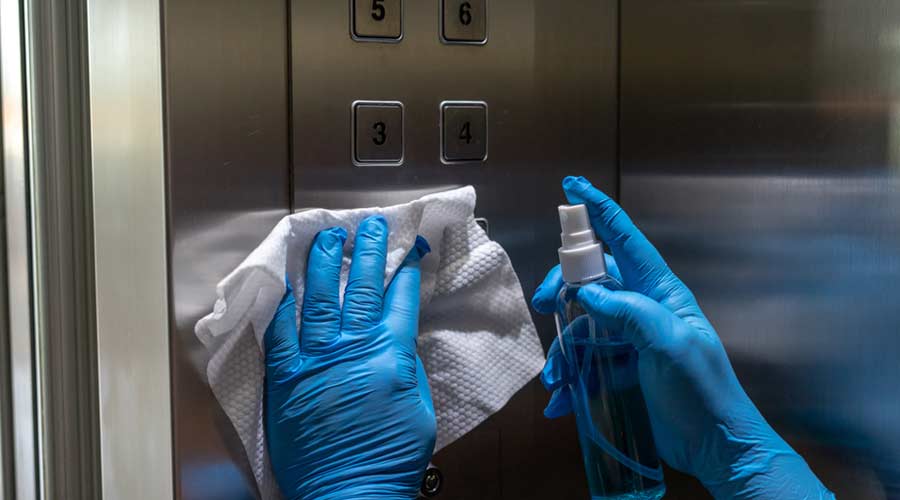
Cleaning professionals and clients alike have long debated both the benefits and drawbacks of day cleaning programs. The pandemic may have paused the conversation for a bit, but a general shift back to office normalcy means that the discussion merits revisiting.
So, is day (or, first shift) cleaning better for the building service contractor (BSC) and client? Or is second and/or third shift the way to go?
According to many experts in the industry, the answer lies somewhere in the middle.
“The benefits of day cleaning can vary greatly depending on the circumstances,” explains Ben Walker, cleaning consultant and president of Walker Foundry, LLC in San Diego. “The running theme is that day cleaning is the best way to combat rising energy costs and the perennial labor shortage, while cleaning at night is old school. But day cleaning comes with its own set of challenges.”
What follows are some things to think about when selling, staffing, and managing day cleaning services, and some tips on how to avoid pitfalls.
Labor Costs and Lower Turnover
Common wisdom says one of the biggest advantages of day cleaning is labor savings and better retention rates. When it comes to labor costs, that is mostly true. BSCs and their clients do pay a premium for second and third shift workers — “between 50 cents to $2 an hour more,” according to Walker.
However, those obvious upfront savings come with some caveats.
“You are going to get a higher production rate on the evening shifts,” says Bill Griffin, president, Cleaning Consultant Services, Inc., Seattle, Washington. “The day shift tends to get interrupted a lot. Office workers may want to stop and chat with the cleaners. Often day cleaners don’t like that, and it leads to frustration.”
Of course, even with the lower pay and frustrating interruptions, many employees only want to work during the day. Studies show that it is the healthier choice; mentally and physically.
“Day cleaning helps maintain healthier circadian rhythms,” reports Allen Rathey, founder of 501c3 [pending] Indoor Exposure Index. “A study in the Journal of Clinical Sleep Medicine showed that persons exposed to full-spectrum lighting had more-aligned circadian rhythms, better sleep and more alertness.”
Another benefit of day cleaning to consider is worker safety. Unless they are team cleaning, night cleaning can create the feeling of isolation, as workers spend hours all alone. That can also be unsafe, particularly for female employees.
There are other reported dangers that come with working alone at night for hours on end.
“A cleaner can have an accident or a health event like a heart attack and not be found until the next morning,” says Walker. “That doesn’t occur all the time, but has happened enough that it should be a consideration.”
Despite these reported drawbacks, there is still a large segment of potential cleaning employees who really thrive working those second and third shifts. Some of these workers already have a day job and took on night cleaning to supplement their income. Some might be stay-at-home parents who can only work nights. Others might have recently retired and simply prefer those hours. And some are true night owls that really dig that third, graveyard shift.
“I did a project with the U.S. Postal Service,” recalls Walker. “Their operations are 24/7 and the people who worked the third shift really liked it.”
Having workers who prefer the night shift is a benefit because there are certain aspects of the job that shouldn’t be done during the standard 9-5 workday. These loud maintenance activities will disrupt business functions.
“You are not going to fire up the vacuum or autoscrubber during the day,” says Walker. “It’s just too loud.”
These activities are more than loud; they can also be dangerous. Unless all cleaning equipment is battery powered, a long tangle of power cords presents a tripping hazard for office workers that may be up and moving around. Mopping, which leaves floors wet and slippery, can also lead to slips or falls.
If cleaning staff must complete loud or potentially dangerous tasks during the day, office workers may find themselves inconvenienced. Building employees may have to walk long distances or go to another floor to visit the restroom. They may have to post makeshift “Do Not Disturb” signs on their doors if they are in the middle of a video call or a recording project.
“Day cleaning can be tough to workload accurately,” says Walker. “And you don’t want to tailor operations to the cleaning function. You want that to be reversed.”
Pros and Cons of Shifting to Daytime Cleaning

 Celebrating BSCAI's 60th Anniversary eBook
Celebrating BSCAI's 60th Anniversary eBook The Down and Dirty on Cleaning in Virus Season
The Down and Dirty on Cleaning in Virus Season How Surfactant Use is Expanding in Commercial Cleaning
How Surfactant Use is Expanding in Commercial Cleaning